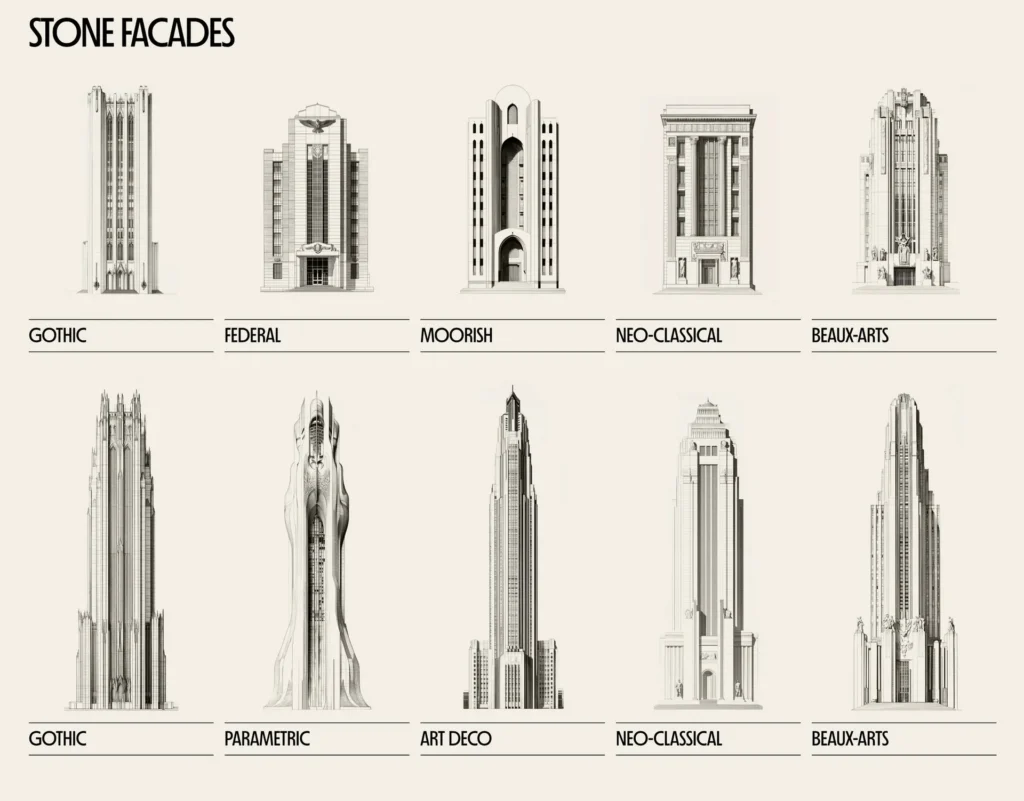The Country is Finally Dreaming Big Again
With fewer than 75 days left until 2026, America’s 250th birthday, we wanted to reflect on the fact that the country is finally dreaming big again. After decades of incrementalism and infrastructure theater, we’re suddenly talking about building at a scale that would make Robert Moses jealous — and Ayn Rand blush.
Call it a Megaproject Moment. Or don’t. Labels matter less than the raw fact that private dollars, public incentives, technological advances, and strategic necessity have converged to create a once-in-a-generation construction supercycle.
And it’s a cycle unlike anything in recent memory: VCs backing city-builders, Taiwan’s crown-jewel semiconductor company betting on Arizona, and Elon literally incorporating his own municipality.
The Megaproject Moment
A megaproject, technically speaking, is an investment with a capital cost that crosses the $1 billion threshold. These are massive physical works, unique in their scale, complexity, and risk. And right now, America is awash in $1B+ undertakings: fabs, factories, data centers, shipyards, and industrial parks the size of small cities.
(Editor’s note: No, something like California’s forever-delayed high-speed rail project doesn’t make the cut. After $100B+ spent since 2008 and barely any track laid, that is merely a MINO: Megaproject In Name Only.)
These $1B+ bets are audacious in nature, with the potential to reshape local economies, entire industries, and in select cases, the global technological balance of power (see: TSMC Arizona).
With TSMC Arizona, we’ve seen what we’ll call The New Physics of American Building. The project went from desert to producing 4nm chips in just over three years. That’s fast, even for Taiwan! This pace reflected a precise, factory-style approach, with modular components, parallel workflows, and heavily imported expertise streamlining what often takes half a decade or more.
This goes beyond your usual suspects…
California Forever raised $900M to build a brand-new city in Solano County, replete with net-zero energy districts, drone highways, autonomous shuttles, and a research campus. But fierce local opposition and regulatory hurdles conspired to stop the greenfield plan in its tracks.
Rather than fold, the California Forever team has pivoted. Last week, the developer proposed attaching their project to Suisun City, tapping existing roads, sewers, and political goodwill, and growing from there. And the scale still shocks:
- 147M sqft. of advanced manufacturing space at Solano Foundry, targeting 225,000 jobs
- A next-generation shipyard to greatly augment/reinvigorate American naval and commercial shipbuilding efforts
- 174,000 smart-home units wrapped in walkable, mixed-use neighborhoods
- Growing the city’s population from ~30,000 to ~450,000

Private city-building is in a brave new age. There’s Esmeralda, a meticulously planned, walkable village proposed for some 90 minutes north of SF. And then, of course, there’s SpaceX’s Starbase, Texas: 1.5 square miles, ~500 residents, and its own government, roads, utilities, and beach access, all built to support rocket Starship production and testing.
The scale of this moment
Since January, by our count, American megaprojects have swelled to 40+ announced ventures. These projects, along with smaller ones, add up to more than $1.3T in capital commitments.
From silicon foundries in the desert to battery giga-factories in the heartland, from next-gen shipyards on the coasts to whole new cities sprouting where none stood before, this is our moment to build at a scale that matches our promise. But remember that for every TSMC Arizona (success), there’s a Foxconn Wisconsin (remember that $10B LCD factory that became a storage warehouse?).
The bottlenecks today are mundane and merciless:
- Permitting timelines that assume 1950s construction speeds
- Labor shortages in nearly every skilled trade
- Supply chain gaps that no amount of re-shoring rhetoric can fix overnight
The $1.3 trillion question
As America hurtles toward its semiquincentennial, the Megaproject represents a fascinating paradox: a bet on atoms in an age of bits, on geographic clustering in an era of remote dispersion, on American industrial muscle memory that’s been dormant for a long time.
- The optimist sees Renaissance: America building its way back to greatness.
- The pessimist sees Ozymandias (monuments to hubris in the desert).
- The realist sees something more interesting: a massive A/B test on whether America can still build things that matter.
Regardless, the strategic logic is clear: Every advanced chip made in Arizona is one that doesn’t depend on the Taiwan Strait staying peaceful. Every Rust Belt gigafactory is a hedge against battery mercantilism. Every new shipyard is a admission that naval power still matters in a West obsessed with software and services.
Here’s our take
Say 30% of these projects fully deliver on their promises. Another 40% pivot into something useful but different. And the remaining 30% will become cautionary tales and abandoned infrastructure. We’d argue that’s a bet worth taking, because the successful 30% would solve rate-limiting steps, build the workforce we need, and reshape domestic capabilities for the next half-century.
The builder knows that it’s the follow-through, not the announcement, that counts. Execution is what separates vanity projects and back-of-a-napkin dreams from true, strategic, and bankable bets on our future prosperity, security, and global leadership. All of this is to say, to realize our dreams, we just need to do what we say we’re going to do. And if we do that, then we can turn this Megaproject Moment into an enduring Era.
And wouldn’t that be the best 250th birthday present of them all?!
